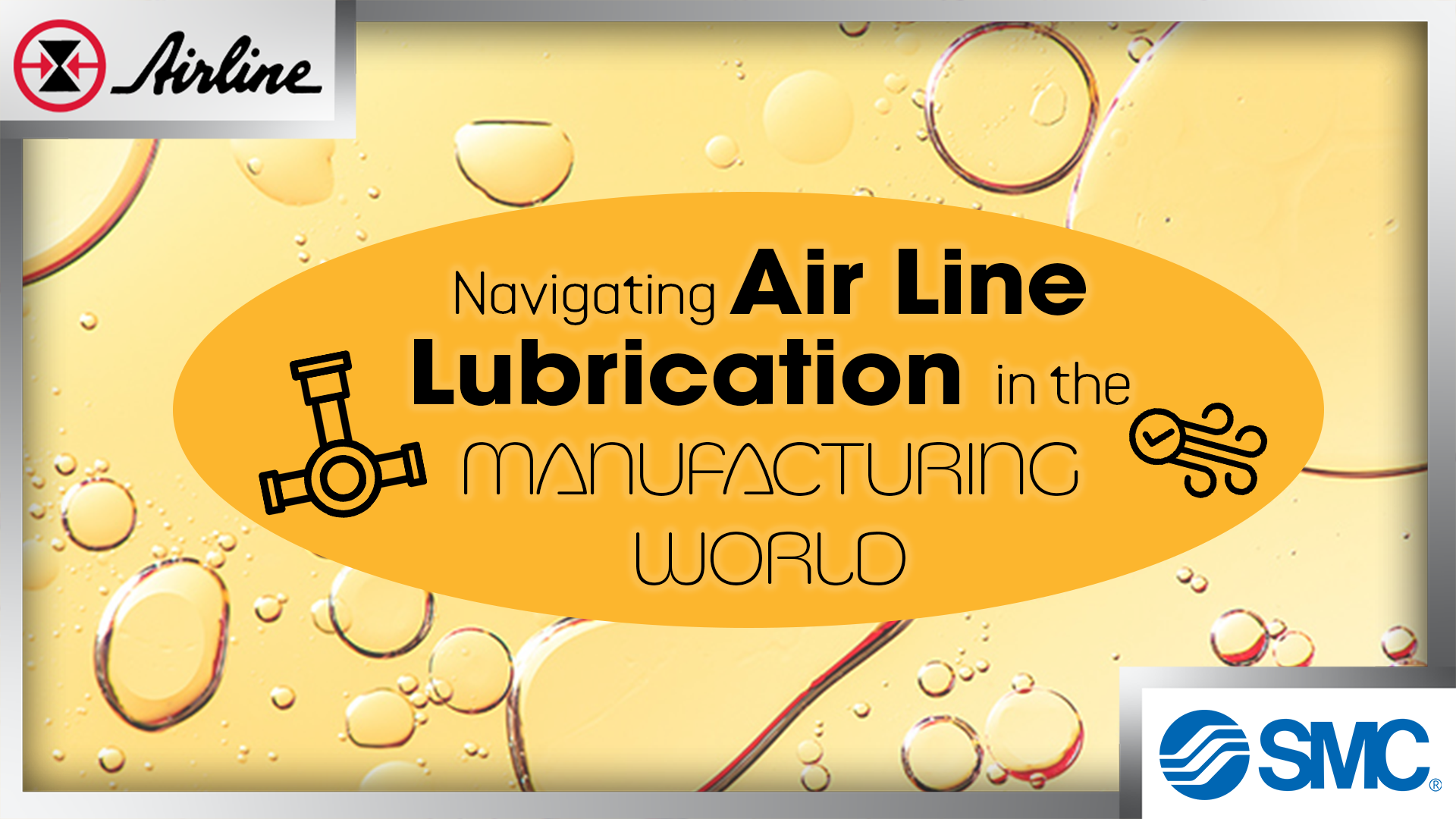In the Shakespearean world of pneumatics: To lubricate, or not to lubricate, that is the question. When installing pneumatic components or modifying equipment, manufacturers often struggle with deciding whether to supply air line lubrication. To make an informed decision, it is important for technicians, engineers, assemblers, or operators to understand the pros and cons of air line lubrication. This blog will discuss six steps to consider when answering the question, ‘to lube or not to lube.'
Skip to a Section
1. Manufacturer's Recommendations | 2. Extended Life | 3. Environmental Extremes | 4. Unnecessary Lubrication | 5. Embrace Non-Lube Components | 6. Existing Lubrication Systems | Final Considerations
-
1. Start with the Manufacturer's Recommendations
 Before proceeding, it is important to check the lubrication requirements specified by the component manufacturer. This step is necessary to maintain the product warranty. For example, nearly all modern pneumatic valves and actuators are factory lubricated and don’t require additional lubrication, while pneumatic tools and air motors often do require lubrication.
Before proceeding, it is important to check the lubrication requirements specified by the component manufacturer. This step is necessary to maintain the product warranty. For example, nearly all modern pneumatic valves and actuators are factory lubricated and don’t require additional lubrication, while pneumatic tools and air motors often do require lubrication.
-
2. Optimal Lubrication for Extended Component Life
When lubrication is required, the goal is to provide a small amount of airborne oil to create a thin lubricant film between the moving parts' mating surfaces. Properly specifying, installing, and adjusting lubrication equipment with the correct lubricant is crucial for success. The manufacturer's product literature often serves as the best source of information to ensure compatibility between the product's capabilities and the application requirements.
-
3. Review Application Requirments
 Specific applications may involve
Specific applications may involve high-heat environments, frequent machinery washdowns, or exposure to chemical contamination which can compromise the factory-installed lubricant. These situations may be candidates for airline lubrication to extend component life. In my experience, this is particularly the case for pneumatic actuators. The increase in life could be 10% or more, depending upon the grease used, type of actuator, and operating conditions.
-
4. Consider the Consequences of Applying Unnecessary Lubrication
If lubrication is not required by the manufacturer's recommendations or application conditions, it's often best to avoid it. Starting a lubrication regimen will wash out the factory grease from valves and actuators, requiring ongoing lubrication to prevent damage. Periodic maintenance (PM) is necessary to replenish lubricator reservoirs with oil. Also, over-lubrication can lead to issues such as excessive oil mist in the environment, hazardous situations, and increased costs.
-
5. Embrace Non-Lube Components
 Using "non-lube" components for new applications has several benefits. They eliminate the cost and maintenance of airline lubricators, improve overall efficiency, and reduce energy consumption by eliminating the added pressure drop associated with a lubricator.
Using "non-lube" components for new applications has several benefits. They eliminate the cost and maintenance of airline lubricators, improve overall efficiency, and reduce energy consumption by eliminating the added pressure drop associated with a lubricator.
-
6. Address Existing Lubrication Systems
For existing machinery already equipped with lubricators, consider employing exhaust cleaners. These devices collect exhaust air from directional control valves, effectively removing oil mist at microscopic levels. This step can help reduce the harmful effects of unnecessary lubrication without extensive remodeling.
> Explore SMC exhaust cleaners
Making Informed Decisions
"To lube or not to lube?" remains the question. By reviewing conditions and using non-lube components in new designs, you can make informed decisions about lubrication practices. Here are some additional factors to consider for an informed decision.

Considerations when adding air line lubrication
- Labor expenses of repeated filling of oil reservoirs
- Expenses of purchasing and stocking oil: Components will wear, and if the oil supply is inadequate, not replenished, or discontinued
- Additional costs of specifying, purchasing, stocking, installing, and maintaining lubrication equipment
- Potential oil spillage and preparing by purchasing oil dry
- Learning the proper adjustments of lubrication equipment
- Learning adequate vs. excessive oil usage
- Potential oil pooling under valve exhausts when used in excess
- Learning the proper oil types (incorrect oil can cause machine damage and downtime)
- Health, safety, and fire considerations: Oil mist in the atmosphere presents a health hazard
- Damage to pneumatic instrumentation equipment sensitive to oil contaminations
Summary
The decision to apply airborne lubrication in pneumatic components should be made based on manufacturer recommendations and specific environmental conditions. Understanding the advantages and disadvantages is crucial to avoid unnecessary costs, maintenance issues, and potential health hazards. By adopting alternative solutions such as exhaust cleaners, businesses can minimize the adverse effects of unnecessary lubrication without undertaking extensive retrofits.
Is your answer to lube? Explore air line lubricators here.
Contact Us!
For all your pneumatic application questions, contact our experts!
Additional Resources
- Source Artice from SMC
- Shop Pneumatic Components
- Use SMC Product Configurator
- More Pneumatic Blog Posts









Leave Comment